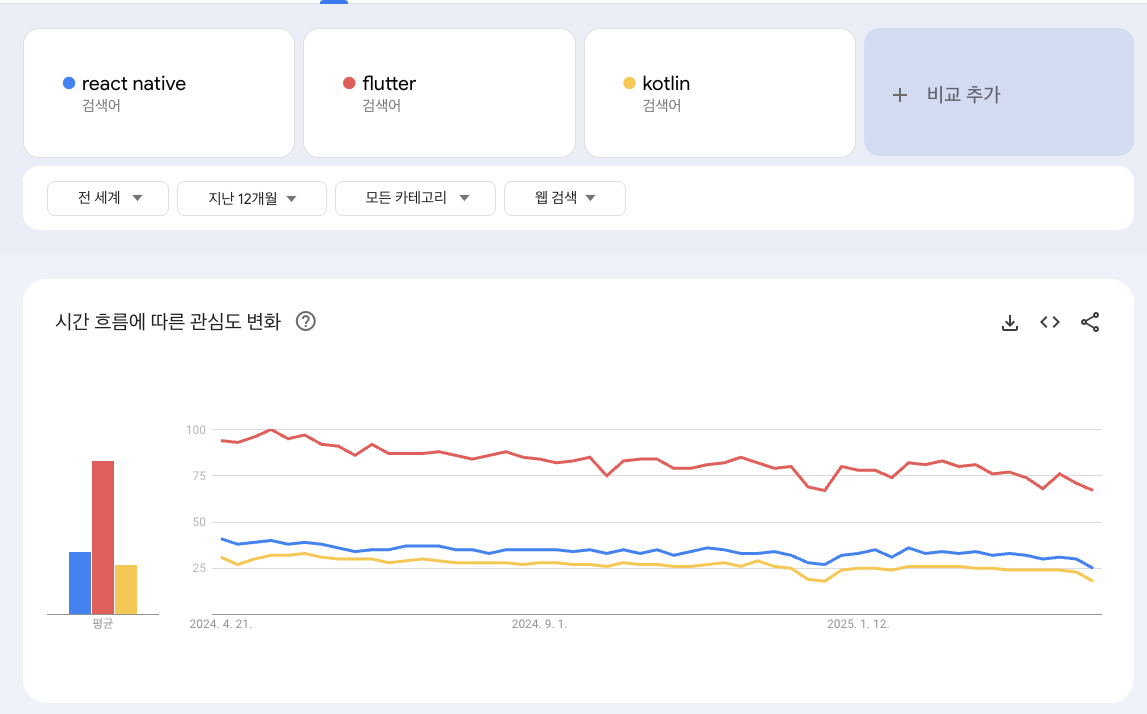Kotlin For Multi Platform | 매거진에 참여하세요
Kotlin For Multi Platform
#Flutter #RN #Kotlin #Cross #Platform #MobileDev #TechTrends
Kotlin Multiplatform: The Quiet Contender in Cross-Platform Development
In the world of app development, "cross-platform" has long been the holy grail — write once, run everywhere.
Most developers have likely explored Flutter or React Native at some point, attracted by the promise of building for both iOS and Android with a single codebase.
But recently, a new player is quietly rising in the background — Kotlin Multiplatform (KMP). And it's time we talked about it seriously.
So, What Is Kotlin Multiplatform?
Kotlin Multiplatform is a technology developed by JetBrains that allows developers to share code across multiple platforms — Android, iOS, desktop, and even web — all using Kotlin.
But let’s get one thing straight:
KMP doesn’t aim to unify the UI layer, unlike Flutter or React Native.
Instead, it takes a more native-first approach:
- Shared Code: Business logic, API integrations, models, etc. are written in Kotlin
- Platform-Specific UI: Android uses Jetpack Compose, iOS uses SwiftUI or UIKit
This means you share what’s sharable, and preserve native UI/UX where it matters.
And that's a big deal for teams who care about platform polish.

Comparing the Big Three: KMP vs Flutter vs React Native
Category | Flutter | React Native | Kotlin Multiplatform |
|---|---|---|---|
Language | Dart | JavaScript / TypeScript | Kotlin |
UI Sharing | ✅ Yes (Own rendering engine) | ✅ Yes (via bridge) | ❌ No (UI is built natively per platform) |
Performance | Fast (but can bloat with scale) | Mixed (degrades with app complexity) | Native-level performance |
Code Reuse | Almost entire codebase | Majority of codebase | Mainly business logic only |
Learning Curve | Requires Dart familiarity | Familiar for JS/TS developers | Easy if already familiar with Kotlin |
Let's break it down from a developer's perspective.
If you're a Java developer:
You’ll feel right at home. Kotlin is a modern evolution of Java with cleaner syntax, null safety, coroutines
and extension functions. KMP feels intuitive and familiar — and transitioning is seamless.
If you're from the JavaScript world:
Expect a learning curve. The syntax is statically typed, async handled by coroutines, and the whole paradigm feels more “strict” than JS.
But if you’ve used TypeScript? You’ll adapt quickly — and probably enjoy the stability.
If you've built apps with Flutter or React Native:
You'll notice one key thing:
You can't share UI code.
At first, this may feel like a limitation. But for teams seeking pixel-perfect native experiences, it's actually a superpower.
The Current Landscape
Flutter
Still a great choice for startups and MVPs. It enables rapid development across mobile, web, and desktop. However, bundle sizes and UI performance in complex apps are common concerns.
React Native
Ideal for full-stack JS/TS teams. But it's hitting architectural ceilings — especially with native integrations. While tools like Hermes and Fabric are improving performance, they’re also raising the complexity bar.
Kotlin Multiplatform
It’s not loud, but it’s growing fast.
Companies like Pinterest, Cash App, and Netflix are already using it. And thanks to JetBrains’ continued investment, the ecosystem is maturing rapidly.
If you’re already deep into Android and considering iOS expansion, KMP feels like a natural next step.
So… When Should You Use What?
Use Flutter when:
You need consistent design across platforms
You’re building a quick MVP
You want to cover web, mobile, and desktop in one go
Use React Native when:
Your team lives in the JS/TS world
You want to maximize code sharing with your existing web app
You’ve already invested in the React ecosystem
Use Kotlin Multiplatform when:
You have Kotlin or Android experience
You care about native UI and want to keep it that way
You want long-term maintainability and clean logic separation
No One-Size-Fits-All
There’s no absolute winner in cross-platform tech.
Your ideal tool depends on:
- Your team’s expertise
- Your app’s performance and UI requirements
- Your long-term maintenance strategy
But if you’re:
- Already running an Android app
- Exploring iOS expansion
- Working with a Kotlin-friendly team
Then Kotlin Multiplatform is no longer just “experimental.”
It’s a pragmatic, robust, and scalable option — one that deserves serious consideration.
Final Thoughts
Flutter and React Native defined the early cross-platform wave.
But now, Kotlin Multiplatform is carving out its niche — focused not on total unification, but on smart code sharing with native power.
If cross-platform 1.0 was about "write once, run anywhere"…
KMP might just be the blueprint for cross-platform 2.0:
"Share what matters. Own the experience."






